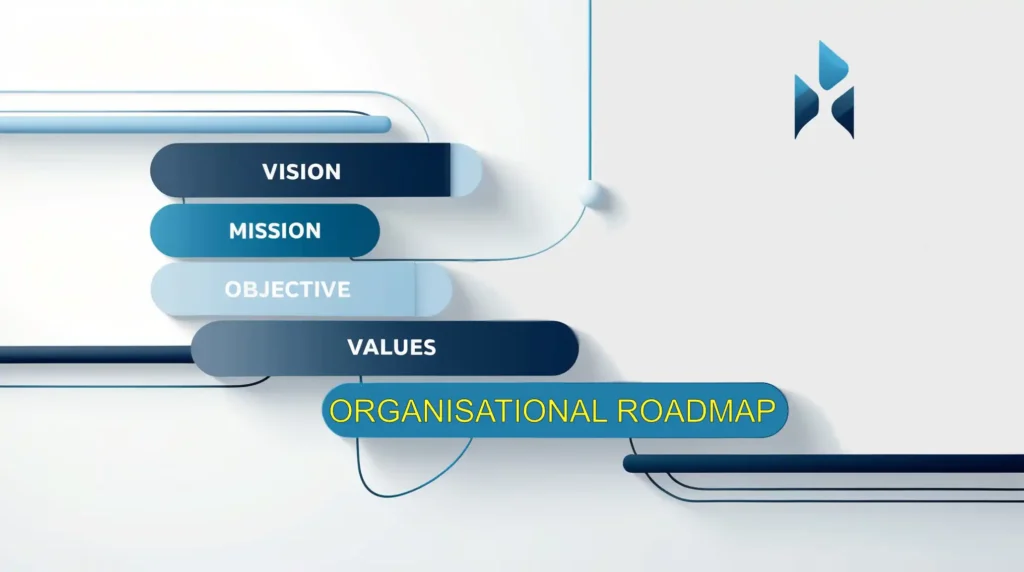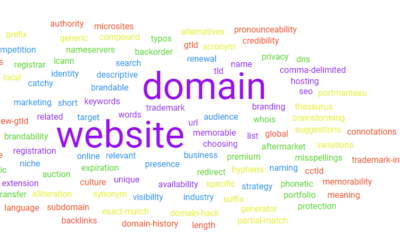Mission Statement: Key to Mastering Your Organisation’s Direction
Are you running a small business, working as a sole trader, or leading a charity? Are you looking to master your organisation’s direction? If so, you undoubtedly need a clear plan to steer you to success. Start with your mission statement.
To illustrate this point, think of it like this: a ship’s captain uses a map and compass to sail through new waters. Similarly, your group requires a clear roadmap to reach its goals.
Consequently, this roadmap will help guide you on your journey to a better future. Without it, however, you might lose your way or miss out on great chances to grow. Therefore, it’s crucial to develop this plan for your organisation’s success.

This roadmap is composed of four essential elements: vision, mission, values, and objectives.
In this comprehensive guide to master your organisation’s direction, we’ll explore each of these crucial components and provide practical advice on how to craft them effectively.
By the end, you’ll have the tools to create a powerful organisational roadmap that keeps your business or organisation focused, aligned, and driven towards its ultimate goals.
Your Mission Statement:
1. Vision: Painting Your Future Landscape
Your vision is the aspirational image of what your organisation aims to become or achieve in the long term.

It’s the “what” – the picture of the future you’re striving to create. A well-crafted vision statement should be:
- Inspirational: It should spark motivation and enthusiasm among your team members and stakeholders.
- Focused: Your vision should provide a clear sense of direction without being overly broad.
- Ambitious yet Achievable: Stretch the boundaries of what’s possible, but keep it within the realm of attainability.
- Forward-looking: Paint a picture of the future, not just reflect your current state.
When developing your vision, ponder these questions:
- What does ultimate success look like for our organisation?
- What impact do we want to have on our customers, community, or industry?
- Where do we see ourselves in 5 or 10 years?
Example:
“To become the go-to provider of innovative, eco-friendly packaging solutions for small businesses across the UK.”
2. Mission: Defining Your Purpose and Scope
Your mission statement answers the “why” – it defines your organisation’s fundamental purpose and the scope of its activities. To master your organisation’s direction, you need an effective mission statement should:
- Clarify your core business and value proposition
- Communicate your overarching purpose
- Outline the boundaries of your operations
When defining your mission, consider:
- What is the core purpose of our organisation?
- What problem are we solving, or what need are we meeting?
- What makes us unique in our field?
Example:
“To empower small businesses with sustainable packaging solutions that reduce environmental impact and enhance brand image.”
3. Values: Guiding Your Organisational Behaviour
Your values are the underlying beliefs, principles, and ethical standards that drive how your organisation operates. They are a vital part if you desire to master your organisation’s direction.
They represent the “how” – the way you conduct yourselves and make decisions while pursuing your vision and mission.
Well-defined values should:
• Reflect your core principles and beliefs
• Inform day-to-day behaviours and interactions
• Align with your overall strategic direction
When identifying your values, ask:
1. What qualities and behaviours are most important to us?
2. What ethical principles do we want to uphold?
3. How do we want to be perceived by our stakeholders?
“Our core values are innovation, sustainability, integrity, and customer-centricity. We are committed to developing creative solutions, minimising environmental impact, operating with transparency, and prioritising our customers’ needs.”
4. Objectives: Transforming Vision and Mission into Tangible Goals

Your objectives are the specific, measurable, and time-bound targets that you aim to achieve to realise your vision and mission. They serve as the practical steps on your roadmap and will help you master your organisation’s direction.
Effective objectives should be SMART:
• Specific: Clearly define what you want to accomplish
• Measurable: Include quantifiable metrics to track progress
• Achievable: Set challenging yet realistic goals
• Relevant: Ensure alignment with your vision and mission
• Time-bound: Establish deadlines for completion
When setting objectives, consider:
- What specific milestones do we need to reach?
- How can we quantify our desired outcomes?
- What are the key steps we need to take, and by when?
Example:
“Over the next two years, we aim to:
1. Develop and launch three new eco-friendly packaging products
2. Increase our customer base by 30%
3. Reduce our production waste by 25%
4. Achieve a customer satisfaction rate of 95% or higher”.
Bringing It All Together: Crafting Your Organisational Roadmap
When you set out your vision, mission, values, and goals, you’re making a clear plan for your group. This will help you achieve your goal and master your organisation’s direction.
This plan helps everyone understand where you’re going and why. It keeps your team and partners on the same page, all working for the same aim.
Remember, though, that making this plan isn’t just a one-time job. As your business grows and the world around you changes, you need to look at your plan often.
Then, you can make sure it still fits with what’s happening now. This way, your plan stays useful and on target.
Taking time to think carefully about your vision, mission, values, and goals is really important.
It’s a key part of planning for the future. After all, this work helps set up your small business, sole trader work, or charity for long-term success.
Now that you have this guide, you’re ready to take charge of where your group is going.
You can move forward with confidence, knowing you have a clear path to follow.
Further reading:
Why your mission statements don’t work and what to do about it.
Mission vs. vision statements: definitions & examples
35 Vision And Mission Statement Examples That Will Inspire Your Buyers





